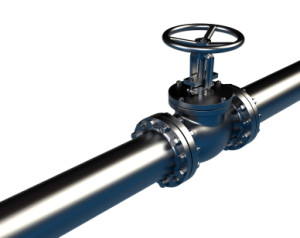by Glen Springer | Aug 27, 2013
This is part two of a four-part blog series discussing the six “types” of B2B buyer personas that occupy the digital space. We also offer some practical tips on how to adapt your sales and marketing strategies to make it easier for your buyer to receive the correct messaging at the correct time.
Part one of this blog series talked about how buyers have changed dramatically with the increased capabilities and use of the internet and web-based technologies. We will now look at the six new buyer types or personas in the B2B space today.

Different Buyer Personas
The Window Shopper
The first type of buyer personas thrives in the freedom inherent to the internet. She is spontaneous, flexible, impulsive and easily distracted. Unlike her pre-internet predecessor who had to methodically preplan B2B purchases using limited resources, today’s B2B buyer can float in and out of the buying cycle as she chooses.
No longer inhibited by a temporally structured and linear buying cycle with a predetermined result, the window shopper can take herself through the buying cycle at her own pace. She may see something she cannot live without and buy almost immediately. Or, she may take her team through nearly the entire sales process and then get distracted by a more pressing business issue.
The flighty and spontaneous nature of the window shopper can be frustrating for B2B salesmen trying to build momentum toward a sale. The important thing to remember when selling to a window shopper is, even though she may not be following the normal timeline of your buying process, there are still certain stages she needs to move through (pain, discovery, evaluation of alternatives, purchase, repurchase). These stages can be mapped to many different buyer personas for effectiveness.
This is a situation where marketing automation can be of great value. By creating digital content to match each stage of the buying process and then monitoring engagement with that content using marketing automation, you can intuitively understand where each prospect is in the buying cycle, despite the unpredictable timeline. Once you understand more about where each prospect is at, you can try to guide the window shopper’s impulses to the next stage by creating a sense of importance in your marketing content to accelerate the purchase.
 The Device Queen
The Device Queen
The next type of buyer is the uber-connected technology addict. She has a MacBook, a desktop, an iPhone, a Kindle and an iPad. She has apps set up on all of them to give her instant updates on the things she’s interested in. She’s tweeted twice and read three blog posts since I started writing this paragraph.
In the digital space, you’ll find the device queen everywhere. She’ll be on a mobile app one moment and her desktop the next, going wherever her next whim takes her. In order to sell to this person, you need to be everywhere she is. This means you need to be able to engage with her on her phone, computers and tablets.
The first step in doing this is making sure all of your marketing content is compatible with mobile devices. While it may not make sense to invest in building your own mobile app, it is pretty simple to make sure your graphics, videos and text are in formats that can be easily viewed on all mobile devices. The second step in engaging with a device queen is to offer many different options for consuming the same content. Sometimes she will feel like watching a 30-minute webcast on her desktop, but other times she would rather have a quick, mobile summary in 140 characters or less. Offer her both, and then make sure she can find the information on search engines as easily as possible through intelligent SEO optimization.
For the next part of this blog series profiling the second two buyer personas, click here.
If you would like more educational content on how integrating insights about your buyers with marketing automation can affect your sales, click here. To learn more about the sales and marketing outsourcing services we offer (including marketing automation implementation, content development and lead nurturing), you can check out our services page. If you are interested in a free review of your sales cycle, you can request one here.
by Glen Springer | Aug 26, 2013
If you’ve been reading blogs about B2B sales and marketing, you’ve likely heard that “the buyer now controls the sales process.” The statement is repeated often because it’s true, and a failure to incorporate this truth into your sales strategy will cause you to lose customers to your competitors.
The buyer’s new power is a result of the internet and internet-based technologies. Whereas going through a list of vendors from an industry magazine or browsing booths at a trade show used to be how your B2B buyer found you, the buyer now has many more resources available to help them make purchasing decisions.
Buyers now get their information in the form of digital articles, blog posts, tweets, Facebook posts, YouTube videos, Instagram pictures, webcasts, etc. This increasing interaction with digital information on a mass level has not only affected the economic structure of business, but the sociological one as well.
As the buying process changed with the introduction of web-based technologies, buyers changed too. Buyers adapted new traits and behaviors conducive to the new digital space they occupy. By understanding these new traits or characteristics and incorporating these insights into your sales strategies, you can make better connections, earn more trust and ultimately, close more deals.
We have a strong belief that more and more B2B products are “Bought” then “Sold”. The habits of buyers are now proving that the buyer wants to feel like they are in control of their education and early stage buying process. Once they have short listed and “bought,” they are much more open to being “sold” by your closer. Because let’s face it, it’s much more fun to buy something than to be sold.
In this four part blog series (this is part 1), we outline six “types” or buyer personas of B2B buyers that occupy the digital space and offer some practical tips on how to adapt your sales and marketing strategies to make it easier for your buyer.
As a quick summary of the types:
The first buyer persona is the Window Shopper, whose flighty tendencies disturb the normal B2B buying timeline. Next, we have the Device Queen who spends half of her time on her iPad. Then, we have the Mystery Man—this guy is as intriguing as he is annoying. Then there is the Eager Beaver who wants everything done, like yesterday. Next is the Worrywart, who needs a bit of hand-holding to be assured he is making the right choice. Last, we have the Know-it-All who forces you to be at the top of your game if you want to impress.
For the next part of this blog series profiling the first two buyer personas, click here.
If you would like more educational content on how integrating insights about your buyers with marketing automation can affect your sales, click here. To learn more about the sales and marketing outsourcing services we offer (including marketing automation implementation, content development and lead nurturing), you can check out our services page. If you are interested in a free review of your sales cycle, you can request one here.
by gabriel_sales | Aug 7, 2013
This blog article is an overview of sales pipeline management and its importance in the B2B world.
For some reason, a lot of B2B companies approach their sales process like a little kid approaches a magic trick; if you just believe enough, something amazing will happen.
While confidence is a critical part of success, belief in your own greatness is not going to convert MQLs to SALs. B2B companies need to think of sales as a process to be managed that is backed by logic and data.
 Management of your sales process should be focused on your pipeline. A sales pipeline “is the amount of business you attempt to close in a given month, quarter or year” (inc.com). You can manage the data of your sales pipeline using spreadsheets or sales and marketing technologies and then use that data to give you insights as to how to forecast better, improve your conversion rate and refine your marketing messages.
Management of your sales process should be focused on your pipeline. A sales pipeline “is the amount of business you attempt to close in a given month, quarter or year” (inc.com). You can manage the data of your sales pipeline using spreadsheets or sales and marketing technologies and then use that data to give you insights as to how to forecast better, improve your conversion rate and refine your marketing messages.
B2B sales pipeline management consists mostly of working with different metrics. By looking at the percentage of your entire pipeline that closes every quarter, you can begin to predict future demand with greater accuracy. You can also look at more specific metrics as to how successful a certain piece of marketing content is for conversion. For example, if your data tells you that 75% of people who download your white paper end up closing, you probably want to make sure that every single MQL sees that white paper.
Managing your B2B sales pipeline also helps you keep track of leads who aren’t ready to buy right away. A lot of companies have discovered that some leads that enter their pipleline don’t close until a year later. Without a clear understanding of how long your typical buying cycle is and what activities signal buying readiness, you might give up on clients who are simply taking a little bit more time to analyze all of their options.
Overall, B2B sales pipeline management turns guesswork into a refined process with measurable results. When you have total visibility of your sales process and marketing efforts, you have certainty that each move you make has been well-thought out and is backed by data.
If you would like more information on B2B sales pipeline management, click here. If you have any questions, please feel free to contact us.
by Glen Springer | May 22, 2013
 When Apple announced that it would be releasing its first phone in January of 2007, the media and tech world lit up with excitement about the new device that was promised would “work like magic.”
When Apple announced that it would be releasing its first phone in January of 2007, the media and tech world lit up with excitement about the new device that was promised would “work like magic.”
Bloggers, pundits and tech geeks created an online buzz that quickly escalated from giddy excitement to fanatical worship. If you think I’m exaggerating, here are a few examples:
“. . . tech bloggers described the ‘Jesus phone’ as ‘the holy grail of all gadgets’ (Danneskjold, 2007) and questioned how other cellphone companies might develop strategies for ‘dealing with the Second Coming”
“An Asian blogger used an image of the ‘sacred heart of Jesus’, but added an iPhone in his left hand held next to his heart.”
“PVP comics online even published a strip featuring ‘Jade’ trying to comfort her Apple-fanatic boyfriend ‘Brent’ who became catatonic after seeing Apple’s iPhone announcement, finally explaining his shock as ‘Jesus has come back and now he’s a phone’.”
~excerpts from Campbell and La Pastina, How the iPhone Became Divine, 2010
Most marketers and advertisers would kill for this kind of hype around the launch of a new product. When people are calling your product the Second Coming on their own, there’s not much work to do, right?
Wrong.
While the exact numbers are not available, it is estimated Apple spent around $250 million with their marketers and advertisers in the year leading up to the iPhone’s release. It is also estimated Apple spent another $20 million launching the iPhone in Europe.
So, what can we learn from Apple now that the iPhone has become the most successful cellular device in history? Even if you’re selling a handheld Jesus, you need to spend a lot of time and resources on launch.
Apple has been praised for being on the leading edge of marketing and advertising since their famous “1984” advertisement during the Super Bowl of the same year. But what Apple did well with the launch of the iPhone was knowing when to initiate the hype and when to let it happen on its own.
After announcing the release of one of the most anticipated products in history, Apple stood back and let the media build up the hype to a religious fever. When the public conversation waned in the mass media and blogosphere, Apple would release a brilliantly executed TV advertisement or print ad campaign. By the time the iPhone was finally released six months later, Apple’s target audience was in a state of pure devotion and desire.
So, the second thing we can learn from Apple is that even the people who invented the most revolutionizing product of the century needed help getting it to market. Apple spent millions to hire advertising and marketing experts who could provide insights and come up with ideas as to how to sell to the masses.
By spending the money to hire experts who understood Apple’s target audience and how to sell effectively in today’s digital world, Apple had possibly the most successful product launch in history. What could hiring sales and marketing experts do for your new product?
If you have any questions or would like to speak to a representative about a B2B sales and marketing outsourcing solution, please feel free to contact us.
by gabriel_sales | Jan 6, 2013
 During this time of year, many B2B companies are pursuing their 2013 sales goals with full force and speed ahead. A lot of companies make lofty goals in January, but are then unable to reach them because of weaknesses in their overall strategy or process. If you are having problems reaching your sales goals or growing as a business, you may want to consider looking into an outsourced sales option.
During this time of year, many B2B companies are pursuing their 2013 sales goals with full force and speed ahead. A lot of companies make lofty goals in January, but are then unable to reach them because of weaknesses in their overall strategy or process. If you are having problems reaching your sales goals or growing as a business, you may want to consider looking into an outsourced sales option.
Here are some of the ways outsourcing B2B sales and marketing can help your company achieve their sales goals in 2013:
- Gained access to an entire sales team for approximately the cost of one internal sales rep. Despite how incredible an individual may be in terms of talent and skill, that person can never match the combined training, experience and established relationships that an outsourced sales team can provide. So, instead of spending money internally to hire someone new, it may be more cost-effective to outsource a whole team.
- Accelerate your sales process by deploying an experienced sales team for specific projects. When you set your sights high in terms of sales goals, you do not leave yourself a lot of time to spend locating and training new salespeople. Anyone with experience in sales knows training a new rep takes a good deal of time and effort on your part. If you do not want to spend the first quarter training, hiring an outsourced team with plenty of prior experience is your best option.
- Time to investigate new markets and establish new territory prior to hiring new in house sales reps. If you do not have years of experience finding salespeople in your specific market, it can be quite difficult to build a successful internal sales team. This is because most great salespeople have a specialty that they unwilling to deviate from. Using outsourcing can help with this dilemma because it allows you time to become more familiar with the market you wish to enter to make connections and entice the best salespeople your way.
- Experiment with new offerings while retaining the focus of your in house team. The launch of a new product or service is one of the best times to use an outsourcing sales and marketing company. This is because you can keep your internal team focused on your current products and proven strategies for success while the outsourced team can test the response of your new product and make adjustments.
- Build a platform for direct sales without affecting your sales channel, or create a sales channel without impacting direct sales. Similarly to the way outsourcing is effective during a new product launch, an outsourced sales team can also be leveraged during a transition between sales models. When attempting to add or transition between sales models, you can keep your internal team focused on the old model and let the outsourcing team navigate the new one. The outsourcing team can assess any concerns or dangers, flush them out and make sure your new sales model is set up to succeed.
If you would like to know more about the benefits outsourcing B2B sales, please reach out to us at Gabriel Sales by contacting us here. For more information on the services we provide, you can check out our Services Page.
by Glen Springer | Dec 11, 2012
 Once you’ve kicked off an initial marketing automation software implementation, ongoing maintenance and management are key to getting the most out of this resource. Here are 9 ways to optimize your marketing automation software once you’ve gone live (and a bonus file at the end):
Once you’ve kicked off an initial marketing automation software implementation, ongoing maintenance and management are key to getting the most out of this resource. Here are 9 ways to optimize your marketing automation software once you’ve gone live (and a bonus file at the end):
1) Review the commonly consumed content by people who convert to buyers, assigning higher value scores to prospects when that content is consumed. Further, consider building it into an automated drip campaign, especially if there is a consistent sequence of content consumed by your buyers.
2) Analyze drip campaign stages for high metric-based performance e.g. CTR or unsubscribe rate and adjust your campaigns accordingly. If there is a piece of content that people commonly unsubscribe from, remove it immediately. If there is a email that has a high CTR, optimize the respective landing page.
3) Monitor and disable inactive automation rules. Outdated automation rules may be conflicting with how you want your software to function. Be sure you are doing a schedule maintenance on automation rule behaviors and removing ones that no longer serve you.
4) Confirm that new prospect notification rules take in account when there is newly published forms/landing pages and when new people on team that require notifications. Having instant notification go to the required parties is essential to getting the most out of your tool.
5) Assuming you have the Google Analytics connector enabled, be sure that the campaign URL builder is filled out for all respective content and custom redirects, allowing you another analytic view of content consumption and visitor behavior.
6) Build a testing protocol for quality control. Example items to QC are: emails include dynamic field insertion, forms work and submission notifies respective parties, landing pages are checked for spelling, grammar and working links, page actions are properly being applied, automation rules work properly, etc.. Create an internal list of test users and a test plan template.
7) Implement dynamic segmentation liberally for highly targeted campaigns and ease of suppression. Examples include:
- segmenting users by location (city, state, zip) so that targeted messages can be sent if you are going to be visiting an area
- segmenting by industry/vertical for customized content
8) Use embedded personalization to deliver the highest targeted website and email messages. This can be complex, but here is a step-by-step example:
- Create a rule that applies a tag called “whitepaper_request” to a prospect who submits a form for a download request
- Design a personalization script that looks for that tag on an existing cookied prospect and replace that whitepaper download call-to-action with an alternative call-to-action. Note: in the personalization design, the default will need to be the original whitepaper call-to-action code.
- Insert the code provided from the personalization script and replace it on your site where the current static whitepaper call to action resides.
9) Create a shared implementation map/checklist and historical change document. Consider using something like Google Docs, with a form and spreadsheet integration so that each change will be entered into a form and tracked in the corresponding spreadsheet, allowing all of the necessary change details to be documented.
Request an Excel download for a basic implementation checklist with status tracking:




 When Apple announced that it would be releasing its first phone in January of 2007, the media and tech world lit up with excitement about the new device that was promised would “work like magic.”
When Apple announced that it would be releasing its first phone in January of 2007, the media and tech world lit up with excitement about the new device that was promised would “work like magic.” During this time of year, many B2B companies are pursuing their 2013 sales goals with full force and speed ahead. A lot of companies make lofty goals in January, but are then unable to reach them because of weaknesses in their overall strategy or process. If you are having problems reaching your sales goals or growing as a business, you may want to consider looking into an outsourced sales option.
During this time of year, many B2B companies are pursuing their 2013 sales goals with full force and speed ahead. A lot of companies make lofty goals in January, but are then unable to reach them because of weaknesses in their overall strategy or process. If you are having problems reaching your sales goals or growing as a business, you may want to consider looking into an outsourced sales option. Once you’ve kicked off an initial marketing automation software implementation, ongoing maintenance and management are key to getting the most out of this resource. Here are 9 ways to optimize your marketing automation software once you’ve gone live (and a bonus file at the end):
Once you’ve kicked off an initial marketing automation software implementation, ongoing maintenance and management are key to getting the most out of this resource. Here are 9 ways to optimize your marketing automation software once you’ve gone live (and a bonus file at the end):